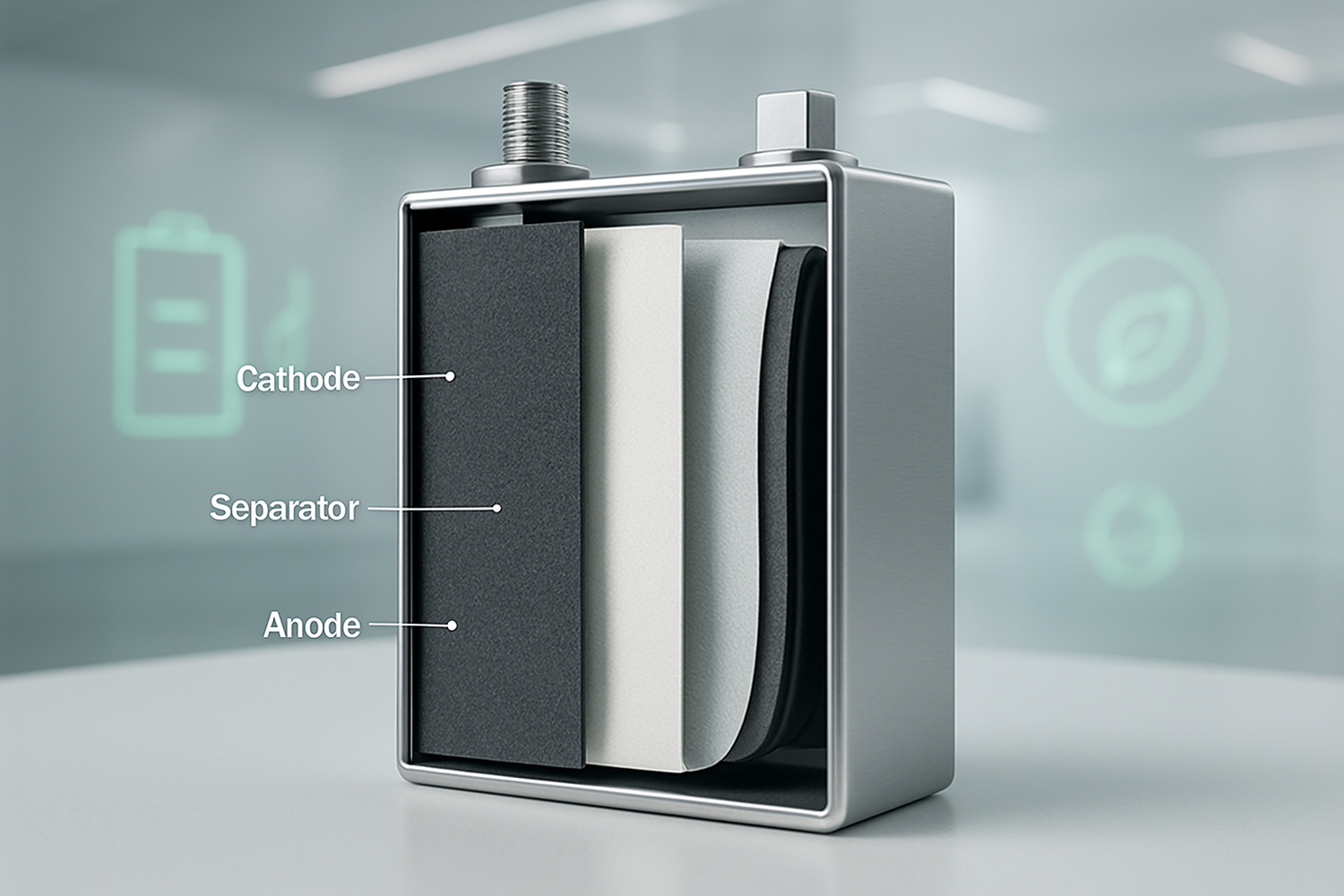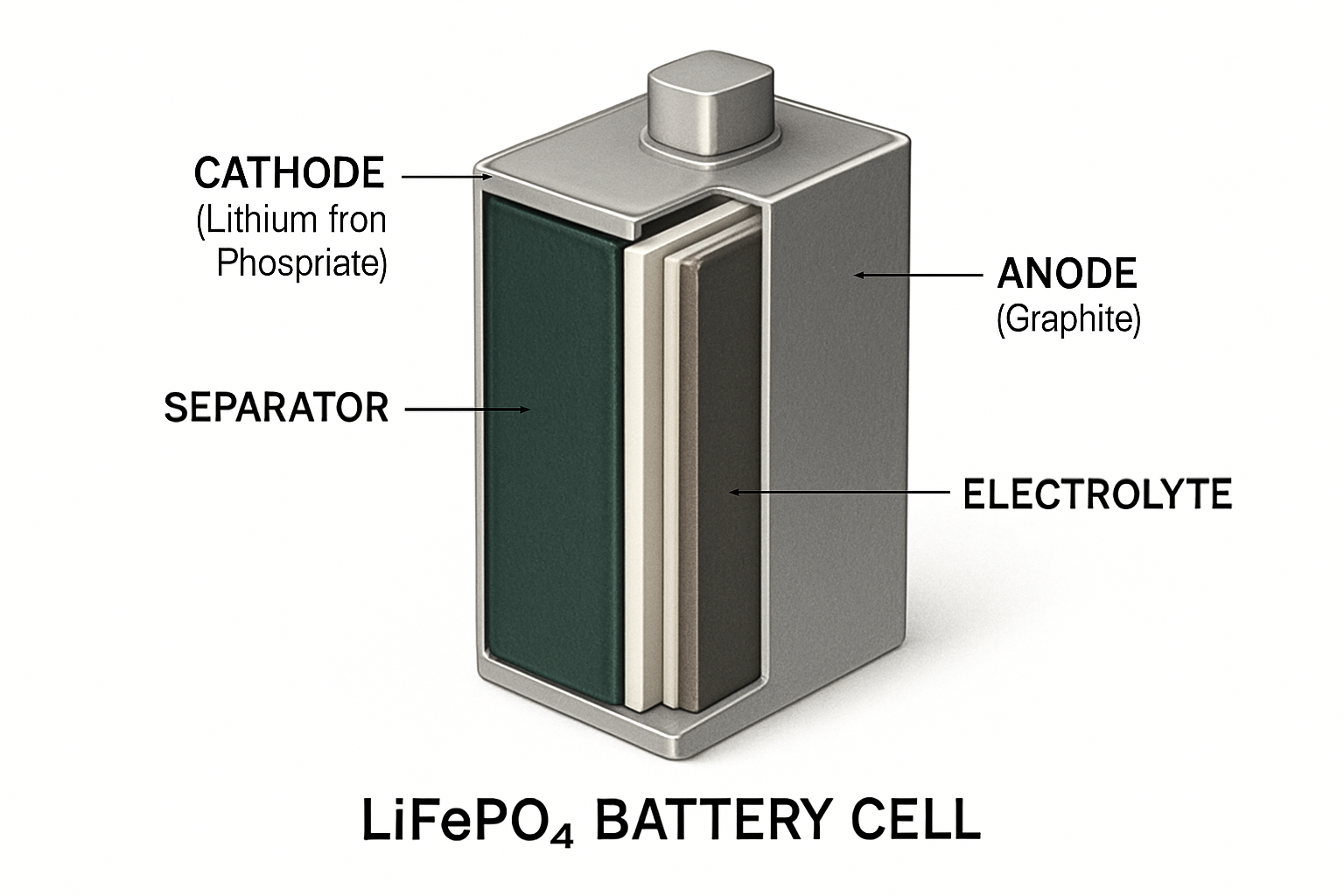As the demand for reliable energy storage grows, different battery technologies are stepping into the spotlight. Among them, the Lithium Iron Phosphate (LiFePO4) battery has emerged as a particularly strong contender. It offers a unique combination of safety, longevity, and performance, making it a preferred option for everything from home solar systems to recreational vehicles.
Understanding the LiFePO4 Advantage: A Look Inside
At its core, a LiFePO4 battery is a type of rechargeable lithium-ion battery. What sets it apart is its specific chemistry, which delivers distinct advantages over other lithium-ion variants like Nickel Manganese Cobalt (NMC) or Lithium Cobalt Oxide (LCO).
How LiFePO4 Chemistry Works
A LiFePO4 battery consists of a cathode made from lithium iron phosphate (LiFePO4), an anode typically made of carbon, and an electrolyte that allows lithium ions to move between them. During discharge, lithium ions travel from the anode to the cathode, creating the electrical current that powers your devices. When charging, this process is reversed. The key to its stability lies in the strong covalent bonds between the phosphate and oxygen atoms, which are much harder to break down under stress compared to the bonds in other lithium chemistries. This inherent stability is a primary reason for its excellent safety profile.
Key Differences from Other Lithium Chemistries
Unlike many other popular lithium-ion batteries, LiFePO4 chemistry does not use cobalt or nickel. This is significant for two reasons. First, it avoids the ethical and supply chain issues associated with cobalt mining. Second, the absence of these more reactive metals contributes to greater thermal and chemical stability. LiFePO4 batteries are less prone to thermal runaway, a condition where a battery overheats and can potentially catch fire. This makes them a fundamentally safer choice for residential and off-grid applications.
Performance Metrics: Why LiFePO4 Excels in Demanding Applications
Beyond its chemical makeup, a LiFePO4 battery delivers tangible performance benefits that translate into reliability and long-term value. These characteristics are especially important in energy storage systems that are cycled daily.
Superior Cycle Life and Longevity
Cycle life refers to the number of full charge and discharge cycles a battery can endure before its capacity drops to a certain level, typically 80% of its original rating. LiFePO4 batteries are leaders in this regard, often delivering between 3,000 and 6,000 cycles, with some lasting even longer under optimal conditions. In contrast, traditional lead-acid batteries may only last for 300 to 500 cycles. For a home solar system, this extended lifespan means a LiFePO4 battery can provide reliable energy for well over a decade without needing replacement.
High Efficiency and Usable Capacity
LiFePO4 batteries feature a high round-trip efficiency, generally over 90%. This means that very little energy is lost during the charging and discharging process. Furthermore, they offer a high depth of discharge (DoD), allowing you to safely use 80-100% of the battery's total capacity. Lead-acid batteries, on the other hand, are typically limited to a 50% DoD to avoid damage. This means a 100Ah LiFePO4 battery provides nearly double the usable energy of a 100Ah lead-acid battery.
Consistent Power Delivery
One of the standout features of LiFePO4 technology is its flat voltage discharge curve. This means the battery maintains a consistent voltage output throughout most of its discharge cycle. Your appliances receive steady, reliable power without the performance sag that occurs as lead-acid batteries drain. This ensures that high-demand devices operate effectively until the battery is nearly depleted.
A Focus on Safety: The Stable Choice for Energy Storage
Safety is a non-negotiable aspect of any home energy storage system. The chemical and structural design of LiFePO4 batteries makes them one of the safest options available today.
Inherent Chemical and Thermal Stability
The robust phosphate-based chemistry of LiFePO4 gives it a high thermal runaway threshold of around 270°C (518°F). This is significantly higher than many other lithium-ion chemistries, making it far less susceptible to overheating. As noted in various reports from institutions like the U.S. Department of Energy, stable chemistries are critical for safe energy storage deployment. This stability ensures safe operation even under demanding conditions.
The Role of the Battery Management System (BMS)
Every quality LiFePO4 battery pack includes an integrated Battery Management System (BMS). This electronic system is the brain of the battery, continuously monitoring cell voltage, current, and temperature. The BMS protects against overcharging, over-discharging, and short circuits, automatically disconnecting the battery to prevent damage. This combination of stable chemistry and intelligent electronics provides a multi-layered safety system for ultimate peace of mind.
Where LiFePO4 Shines: Applications and Economic Sense
The unique benefits of LiFePO4 make it suitable for a wide range of applications, and its long-term economics are compelling. The growing adoption of battery storage is a trend highlighted by international bodies like the International Renewable Energy Agency (IRENA), which sees storage as crucial for integrating renewables.
Ideal Use Cases for LiFePO4 Technology
- Home Energy Storage: Paired with a solar panel array, a LiFePO4 battery can store excess energy generated during the day for use at night, reducing reliance on the grid.
- Off-Grid Systems: For cabins, farms, and remote homes, LiFePO4 provides a reliable and long-lasting power source for true energy independence.
- RVs and Marine Applications: Its lightweight nature, high usable capacity, and maintenance-free operation make it perfect for mobile power needs.
Calculating the Total Cost of Ownership (TCO)
While the upfront cost of a LiFePO4 battery can be higher than a lead-acid equivalent, its total cost of ownership is significantly lower. This is due to its much longer lifespan, higher efficiency, and zero maintenance requirements. Fewer replacements and more usable energy result in better value over the battery's life. For a deeper analysis of how these factors influence long-term value, you can review this detailed breakdown of solar storage performance metrics.
| Feature | LiFePO4 Battery | Lead-Acid Battery |
|---|---|---|
| Average Cycle Life | 3,000 - 6,000+ cycles | 300 - 500 cycles |
| Usable Capacity (DoD) | 80% - 100% | 50% |
| Round-Trip Efficiency | ~92% | ~80-85% |
| Maintenance | None | Regular (e.g., checking water levels) |
| Total Cost of Ownership | Lower | Higher |
The Clear Choice for Modern Energy Needs
The LiFePO4 battery stands out for its superior safety, exceptional longevity, and consistent performance. Its stable chemistry, combined with an intelligent BMS, provides a reliable energy storage solution you can trust. As the International Energy Agency (IEA) notes, battery storage is critical for the clean energy transition, and technologies like LiFePO4 are leading the way. By investing in LiFePO4 technology, you are not just buying a battery; you are securing a dependable, long-term solution for your energy independence.
Frequently Asked Questions
Are LiFePO4 batteries better than other lithium-ion batteries?
For stationary energy storage, LiFePO4 is often considered superior due to its emphasis on safety, stability, and long cycle life. While some other lithium chemistries offer slightly higher energy density, LiFePO4's resilience and longevity make it a more practical and secure choice for home and off-grid applications.
Can I use a LiFePO4 battery in cold weather?
LiFePO4 batteries can discharge power in a wide range of temperatures, including below freezing. However, charging is typically restricted at temperatures below 0°C (32°F) to prevent damage. Many modern LiFePO4 batteries include a low-temperature cutoff or internal heating elements managed by the BMS to ensure safe operation in colder climates.
Is a LiFePO4 battery worth the higher initial cost?
Yes, for most long-term applications. The higher initial investment is offset by a much longer service life, greater usable energy per amp-hour, and no maintenance costs. Over its lifetime, a LiFePO4 battery almost always proves to be the more economical choice compared to lead-acid alternatives.
Do LiFePO4 batteries require maintenance?
No. LiFePO4 batteries are maintenance-free. Unlike flooded lead-acid batteries that require periodic watering and cleaning, LiFePO4 batteries are sealed units. The integrated BMS automatically handles cell balancing and protection, requiring no user intervention.





Leave a comment
All comments are moderated before being published.
This site is protected by hCaptcha and the hCaptcha Privacy Policy and Terms of Service apply.